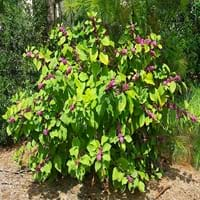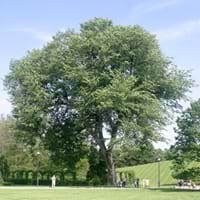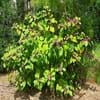Life Span
Perennial
Perennial
Origin
Southeastern United States, South-Central United States
South-Central United States, Texas, Mexico
Types
Not Available
Cedars
Habitat
bottomlands, Coastal Regions, Moist woods, pine woods, Slopes, Swamps, Thickets, Woods
River side, Woodlands
USDA Hardiness Zone
6-11
7-9
Sunset Zone
3a, 3b, 4, 5, 6, 7, 8, 9, 14, 15, 16, 17, 18, 19, 20, 21, 22, 23, 24
Not Available
Habit
Arching/Fountain-shaped
Oval or Rounded
Flower Color
Pink, Lavender
White, Ivory
Flower Color Modifier
Not Available
Bicolor
Fruit Color
Purple, White
Red, Light Green, Tan
Leaf Color in Spring
Light Green
Green, Yellow green
Leaf Color in Summer
Light Green
Green, Dark Green
Leaf Color in Fall
Yellow green, Tan
Yellow, Green, Yellow green
Leaf Color in Winter
Not Available
Not Available
Leaf Shape
Elliptic
Elliptic, toothed
Plant Season
Spring, Summer, Fall
Spring, Summer, Fall
Sunlight
Full Sun, Partial Sun, Partial shade
Full Sun, Partial Sun
Growth Rate
Medium
Medium
Type of Soil
Clay, Loam, Sand
Clay, Loam, Sand
The pH of Soil
Acidic, Neutral
Acidic, Neutral, Alkaline
Soil Drainage
Well drained
Well drained
Bloom Time
Early Summer, Summer, Late Summer
Late Summer, Early Fall
Tolerances
Not Available
Pollution, Drought
Where to Plant?
Ground, Pot
Ground
How to Plant?
Cuttings, Seedlings
Seedlings, Stem Planting
Plant Maintenance
Medium
Medium
Watering Requirements
Medium
Keep the ground moist but not water-logged, Requires a lot of watering, Requires watering in the growing season, Water Deeply
In Summer
Lots of watering
Lots of watering
In Spring
Moderate
Moderate
In Winter
Average Water
Average Water
Soil pH
Acidic, Neutral
Acidic, Neutral, Alkaline
Soil Type
Clay, Loam, Sand
Clay, Loam, Sand
Soil Drainage Capacity
Well drained
Well drained
Sun Exposure
Full Sun, Partial Sun, Partial shade
Full Sun, Partial Sun
Pruning
No need to prune
Prune to stimulate growth, Remove damaged leaves, Remove dead branches, Remove dead leaves, Remove hanging branches
Fertilizers
All-Purpose Liquid Fertilizer, fertilize in spring, Use a fertilizer ratio of 16-4-8
All-Purpose Liquid Fertilizer, fertilize in growing season, Nitrogen
Pests and Diseases
Red blotch
Bacteria wilt, Beetles, Red blotch
Plant Tolerance
Not Available
Salt, Shade areas
Flowers
Yes
Insignificant
Flower Petal Number
Single
Single
Foliage Texture
Coarse
Fine
Foliage Sheen
Matte
Glossy
Attracts
Birds, Butterflies
Butterflies
Allergy
Poisonous
Skin rash
Aesthetic Uses
Showy Purposes
Landscape Designing
Beauty Benefits
Not Available
Not Available
Environmental Uses
Air purification, Food for animals, Food for birds
Air purification, Amazing growth rate, Erosion control, Food for birds, Food for insects, Nesting sites for birds, Prevent Soil Erosion
Medicinal Uses
Colic, Dysentry, Fever, Malaria, Rheumatism, Stomach pain
No Medicinal Use
Part of Plant Used
Flowers, Root
Stem, Tree trunks
Other Uses
Showy Purposes, Used as Ornamental plant, Used for bedding in gardens, Used for fragrance, Used for its medicinal properties, Used for Landscaping
Used as firewood, Used for woodware, Used in construction
Used As Indoor Plant
No
No
Used As Outdoor Plant
Yes
Yes
Garden Design
Foundation, Mixed Border, Screening, Wind Break
Feature Plant, Shade Trees, Street Trees, Topiary / Bonsai / Espalier
Botanical Name
CALLICARPA americana
ULMUS crassifolia
Common Name
American beautyberry , French mulberry
Cedar Elm
In Hindi
American Beautyberry Tree
देवदार एल्म
In German
Amerikanische Schönbaum
Cedar Elm
In French
Américaine Beautyberry Arbre
Cedar Elm
In Spanish
Americana beautyberry Árbol
Cedar Elm
In Greek
American Beautyberry Δέντρο
Cedar Elm
In Portuguese
Árvore Beautyberry Americana
Cedar Elm
In Polish
Amerykański pięknotka Drzewo
Cedar Elm
In Latin
Latin Beautyberry ligno
Ulmus Cedar
Phylum
Magnoliophyta
Magnoliophyta
Class
Magnoliopsida
Magnoliopsida
Family
Verbenaceae
Ulmaceae
Clade
Angiosperms, Asterids, Eudicots
Angiosperms, Eudicots, Rosids
Tribe
Not Available
Not Available
Subfamily
Ranunculoideae
Not Available
Number of Species
Not Available
Not Available
Season and Care of American Beautyberry and Cedar Elm
Season and care of American Beautyberry and Cedar Elm is important to know. While considering everything about American Beautyberry and Cedar Elm Care, growing season is an essential factor. American Beautyberry season is Spring, Summer and Fall and Cedar Elm season is Spring, Summer and Fall. The type of soil for American Beautyberry is Clay, Loam, Sand and for Cedar Elm is Clay, Loam, Sand while the PH of soil for American Beautyberry is Acidic, Neutral and for Cedar Elm is Acidic, Neutral, Alkaline.
American Beautyberry and Cedar Elm Physical Information
American Beautyberry and Cedar Elm physical information is very important for comparison. American Beautyberry height is 182.88 cm and width 182.88 cm whereas Cedar Elm height is 910.00 cm and width 760.00 cm. The color specification of American Beautyberry and Cedar Elm are as follows:
American Beautyberry flower color: Pink and Lavender
American Beautyberry leaf color: Light Green
Cedar Elm flower color: White and Ivory
- Cedar Elm leaf color: Green and Yellow green
Care of American Beautyberry and Cedar Elm
Care of American Beautyberry and Cedar Elm include pruning, fertilizers, watering etc. American Beautyberry pruning is done No need to prune and Cedar Elm pruning is done Prune to stimulate growth, Remove damaged leaves, Remove dead branches, Remove dead leaves and Remove hanging branches. In summer American Beautyberry needs Lots of watering and in winter, it needs Average Water. Whereas, in summer Cedar Elm needs Lots of watering and in winter, it needs Average Water.





